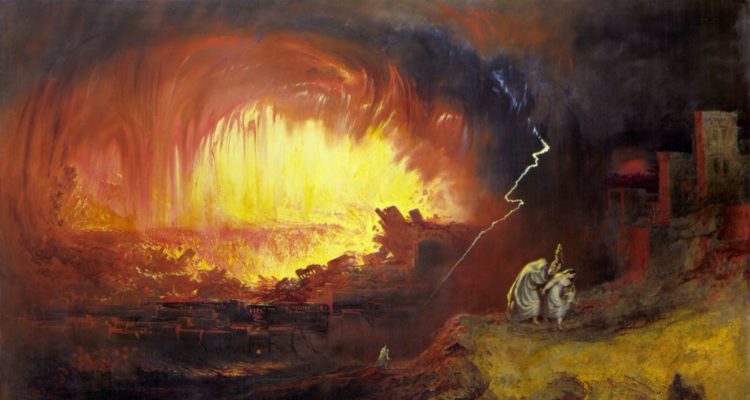Archaeologists believe they have found the ancient city of Sodom, whose destruction is described in the Bible. They say it was caused by a meteorite.
By Batya Jerenberg, World Israel News
Archaeologists excavating the Bronze Age city of Tall el-Hammam in Jordan believe it to be the biblical city of Sodom, destroyed some 3,700 years ago.
According to the Bible, God obliterated the sinful cities of Sodom and Gomorrah and the plain upon which they stood by raining down on them “brimstone and fire.”
A report last Tuesday on the Universe Today website, which publishes space and astronomy news, quotes archaeologists as saying there are clear indications that a meteorite exploded in the air above what is now the Middle Ghor plain, wiping out a civilization that existed there for over 2,500 years.
Archaeologist Phillip Silvia of Trinity Southwest University presented the findings on November 15th at the annual meeting of the American Schools of Oriental Research. He and colleague Steven Collins say that the damage to the structures as well as to the 100-foot-thick and 50-feet-high walls around Tall el-Hammam was directional, which supports the theory of an immensely strong shock wave hitting the city from a mid-air explosion.
The huge magnitude of the blast destroyed an area of no less than 500 square kilometers. It is estimated to have been the equivalent of a 10-megaton nuclear warhead exploding about one kilometer above the ground.
A thick layer of ash that covers the site indicates that a fire had consumed the city. However, the discovery of a pottery shard with one side melted to glass shows that it was no petro-chemical blaze, perhaps set off by an earthquake, which was the prevailing theory as to what had destroyed the ancient city.
A study of the glass side of the shard shows that it had been exposed to a temperature of 8,000-12,000 degrees Celsius. In addition, the glass layer was only one millimeter thick, meaning that the concentrated burst of heat must have happened quickly, taking less than a few milliseconds.
Another proof that the city was destroyed by a meteorite explosion, the archaeologists say, is the discovery of a “melt rock” – three different rocks melted together, about a pound in weight and, like the shard, covered in glass. It, too, must have been exposed to intense heat, though for a few seconds longer than the clay piece.
The final proof that a meteorite had destroyed the city, according to the archaeologists, is the fact that the area – described in both the bible and historically as rich agriculturally – was not reinhabited for the next 700 years because the soil’s consistency had completely changed. Soil samples below and above the ash level were analyzed geochemically and found to contain three to four times the salt content allowing for the growth of wheat and barley.
The scientists theorize that the shock wave from the meteor blast spread a layer of salt from the nearby Dead Sea throughout the area, making the land agriculturally useless for centuries.





